Measures to combat spider mites on cucumbers in the greenhouse
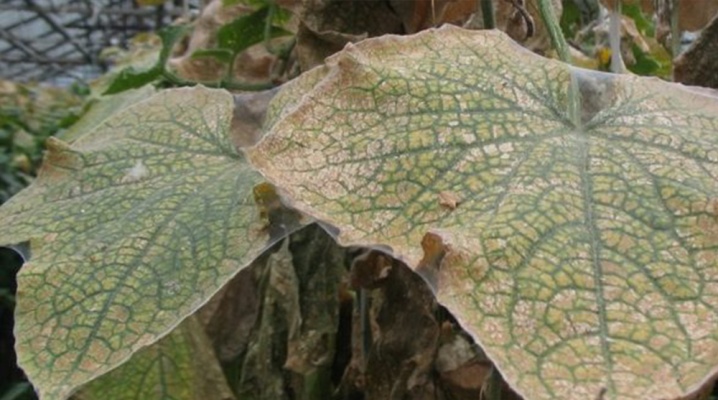
The spider mite is a big problem that almost every summer resident faces. If you do not immediately take certain measures to remove this insect, the pest can destroy many plants in a short time, thereby leaving you without a crop. We will describe in the article what signs the appearance of this harmful insect shows, and also in what ways you can fight it.
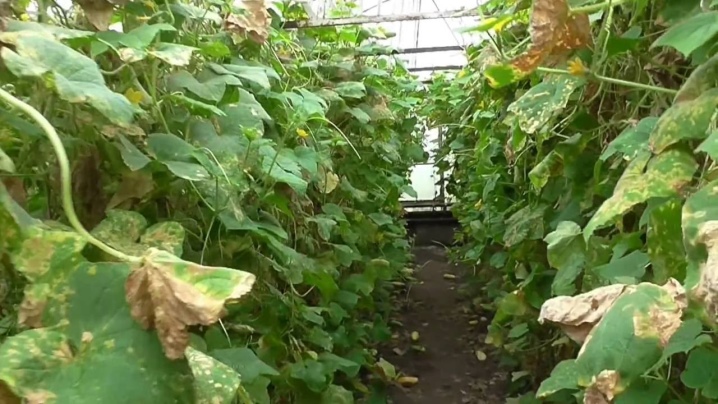
Description of the pest
Spider mite is a true cucumber lover... He is often met in their greenhouses by summer residents who are engaged in gardening.
In order not to confuse it with any other insect, it is necessary to know exactly the features of its appearance. It looks imperceptible and looks more like a small insignificant dot measuring only 1 millimeter, which moves along the plant. Because of this, many summer residents, purposefully looking for this insect on cucumbers, resort to using a magnifying glass.
Its body color can be red, green, yellowish or orange. Moreover, males have a more elongated body and faded color, while females are most often large and can be bright red or red. The largest individuals of the spider mite, feeding hard, can reach 2 millimeters.

Insect larvae are also hardly noticeable. They are transparent, usually light green in color or green with brown impurities, and black spots are located on the sides. The spider mite is quite fertile - in a few hours it can lay about 500 eggs, which is why, having noticed the appearance of this pest, it is necessary to get rid of it as soon as possible. The eggs of this mite are usually light yellow or milky in color.
It is the greenhouse as a closed space that is a favorable breeding ground for this pest. It is usually warm in the greenhouse, which contributes to the active reproduction of the gluttonous pest, and the higher the temperature there, the faster the embryo of this insect develops. By the way, the life cycle of a spider mite also depends on this.
Most often, this harmful insect hides on the back of the leaf, which makes it even more difficult to detect it if you do not search for it purposefully.
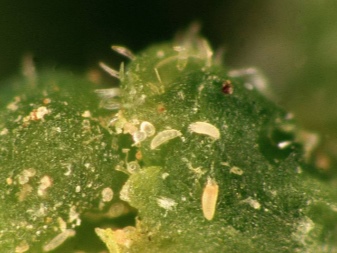
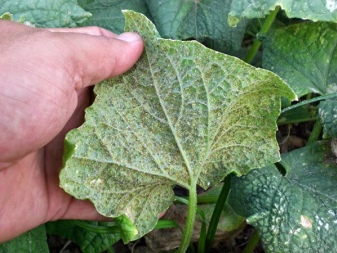
Due to the fact that the spider mite is not very noticeable, it is most often found late. By this time, he had already bred for most of the cucumbers, covering them with cobwebs, which is the result of his life.
To prevent the defeat of the cucumbers, you need to often and carefully examine their leaves, and on both sides. This is a long and not the most pleasant process, but this is the only way you can ensure the safety of your harvest.
Most often, this insect appears on cucumbers due to high temperatures and minimal air humidity. If the temperature reaches +30 degrees and above, then the spider mite feels as comfortable as possible... So, given the love of the spider mite for the heat, summer residents living in the southern regions need to be especially careful.
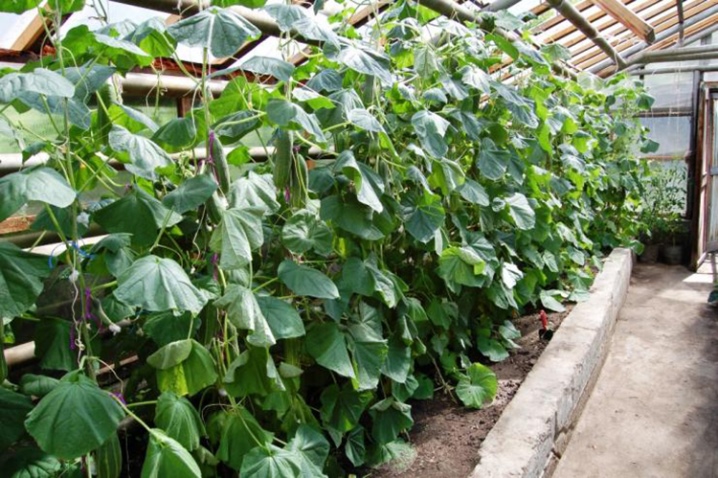
Signs of plant damage
Despite the fact that it is not the largest insect in size, it can cause enormous harm to cucumbers and, not limited to them, switch to other plants, including eggplant, currant, strawberry, as well as petunia, roses and hydrangea.
Due to the influence of this insect, cucumbers begin to wither, the process of photosynthesis is confused and disrupted. The mite depletes them by sucking out all the nutrients and feeding on the leaf cells. Due to the insect, the planted plant begins to weaken, and its immunity decreases markedly.
Due to a decrease in immunity, cucumbers also pick up other diseases, which, together with a tick, literally kill the plant. Its leaves gradually turn yellow and curl. Then small white spots begin to form on the plant, eventually they become covered with cobwebs.
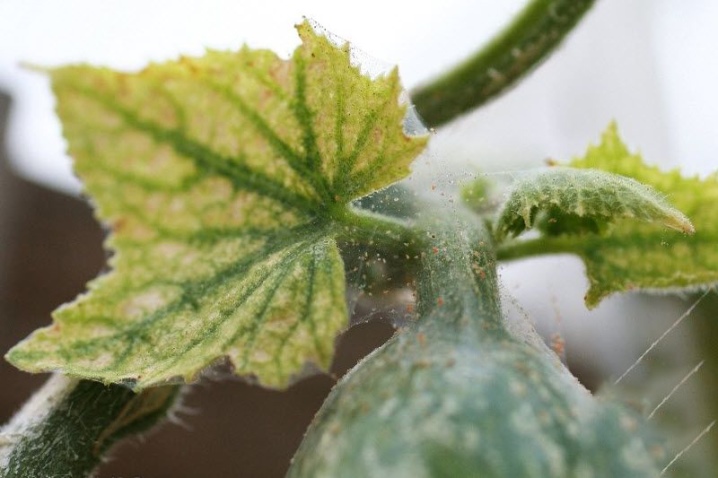
The web of this insect also has certain characteristics. It is water-repellent, making it harder to care for your plants.
At the ends of the leaves and shoots of those plants that were affected, it will be easy to notice a large number of small insects that are actively moving.
In addition to all this, rot may appear on the leaves of the plant, since this insect is the main carrier of gray rot spores.
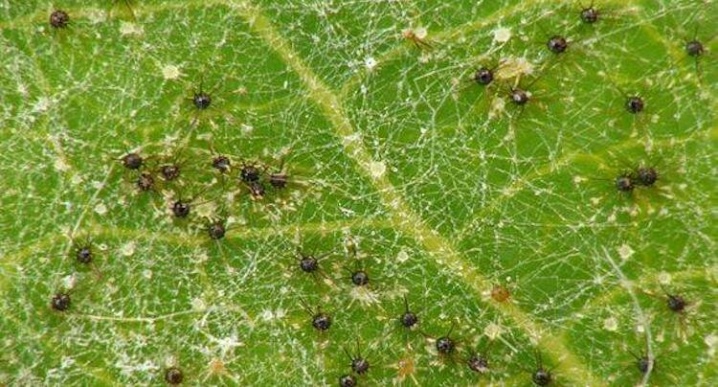
Control methods
Chemicals
The use of such means is quite effective, however, such measures are usually resorted to only if it is not possible to get rid of the pests using other methods. They act quickly, but they have a high level of toxicity and can harm both humans and beneficial insects and the environment in general.
However, note that it will be pointless to use the same remedy several times in a row, due to the fact that the insect quickly gets used to it. Because of this, the composition of the solution must be changed periodically. Spraying the plant once in order to completely destroy the gluttonous pest will not be enough.
The frequency of treatment of a plant with chemicals directly depends on the weather conditions. If it is hot and dry outside, it is recommended to carry out the treatment more often. In the summer, this is done every week in order to prevent the development of larvae and the appearance of new individuals as much as possible. And since substances are subject to rapid evaporation in the heat, the processing of greenhouse plants is carried out either early in the morning or in the evening, when the sun has already set.
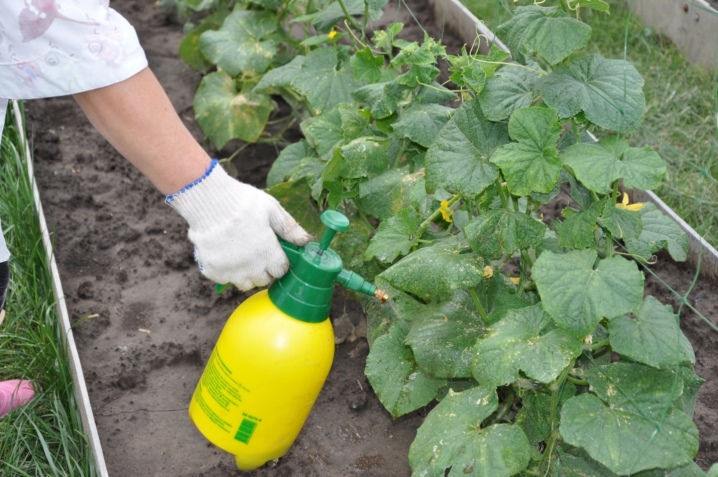
The most effective chemicals in this regard are considered Aktara, Flumite, Apollo, Etisso, Vertimek, Karbofos, Neoron, Nissoran. These funds have a different protection period and processing frequency, but their effectiveness is equally high.
Separately, we note that when processing a plant with similar substances safety precautions must be followed. Do not neglect them, use rubber gloves, a mask and glasses for your protection, otherwise you risk harming your health.
In addition, when the plant is bearing fruit, it is not recommended to use these products, otherwise the crop will be unsuitable for human consumption.

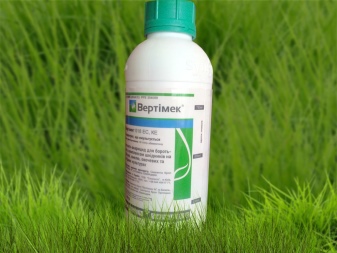
Biological agents
Biological agents are also highly effective, but they are useless for small larvae and eggs, and are mostly used against adult ticks.
Such substances are more environmentally friendly than the aforementioned chemicals. Most often, they are allowed to be used during fruiting.
The most popular among summer residents are biological preparations such as "Akarin", "Aktofit", "Kleschegon", "Kleschevit", "Fitoverm" and "Bitoxibacillin"... All these funds are highly effective and act on a harmful insect in the period from 8 to 24 hours. At the same time, these funds do not cause resistance in the insect, which allows you to use the same drug several times in a row.
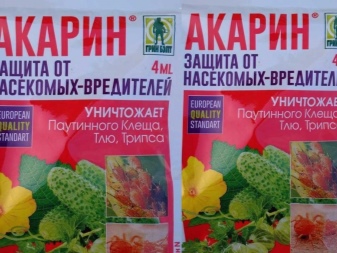
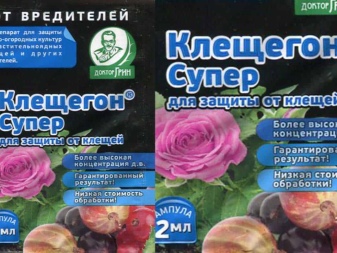
In addition, the enemies of the spider mite are also used, which are other types of mites - amblyseius and phytoseiulus... You can buy them at almost any flower shop.These species of mites are predatory and quite voracious, which is why they are able to destroy about 90% or more of harmful insects, if used correctly.
You can add to this all the planting of plants that harmful insects are afraid of. If you use this method together with chemical or biological agents, the effect will be guaranteed. However, these plants do not have the ability to deal with pests on their own.
Nevertheless, the effect of them is noticeable. Plants that scare away spider mites include calendula, marigolds, wormwood, parsley, garlic, onions, yarrow and cyclamen.

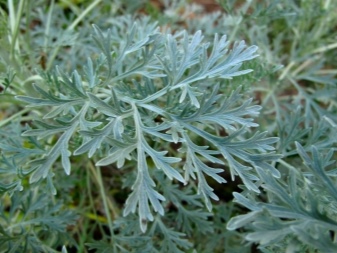
Folk ways
This is also a good option, which helps to get rid of the pest in the shortest possible time. They begin to use them most often at a time when the plant begins to actively bear fruit. This is explained by the fact that folk methods are safe and, with a high degree of probability, do not harm the fruits of plants, they will still be useful for food.
Marigold
For such a tool, you will need the following components:
- half a bucket of dried flowers;
- warm water;
- 50 grams of laundry soap shavings.
First, you need to mix dried flowers with slightly heated water and let them brew, which will take no more than 2 days. After that, the resulting solution must be thoroughly mixed and filtered. And only then can soap be added to it.
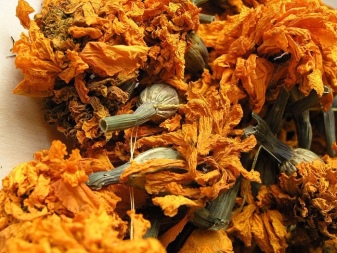
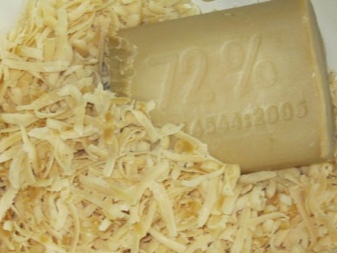
Plants are best treated with this agent in the evening in dry weather, no more than 1 time in 7 days. In this case, it is necessary to process only the back side of the sheets.
Potato tops
Another effective way to eliminate parasitic insects. To prepare the product, you will need components such as:
- half a bucket of potato tops;
- warm water.
All ingredients must be mixed and given infuse... This will take a little time, about 5 hours. After that, the resulting liquid will need to be thoroughly filtered. Everything, the solution is ready, it is recommended to use it for processing plants no more than 1 time in 7-10 days.
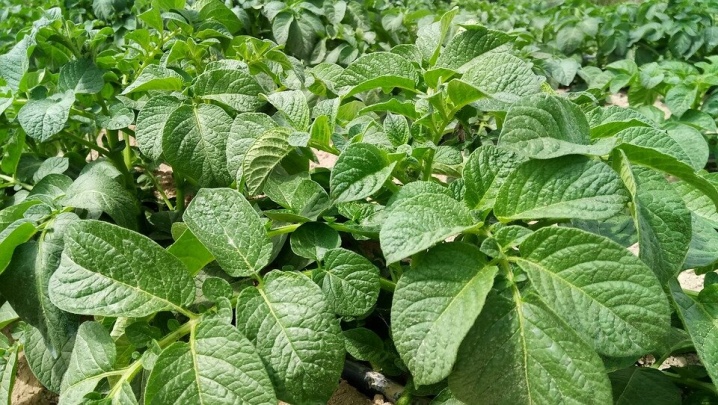
Tomato tops
In order to make such a solution, you will need:
- half a bucket of tomato tops;
- water;
- 40 grams of grated tar soap.
Initially, the tops must be filled with water. All this needs to be boiled over low heat for about half an hour. After cooling the solution, you need to add soap to it, dilute it all again with water in a ratio of 1 to 2. It is necessary to spray cucumbers with a similar solution no more than 1 time per week.
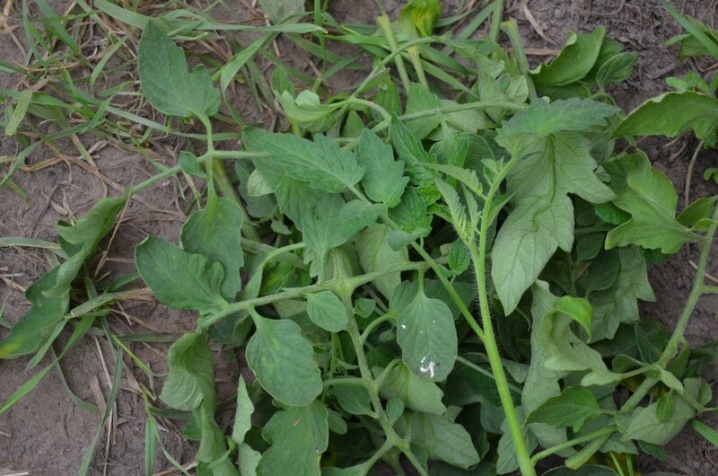
Aconite nosy
Another tool that is highly effective and helps well in the fight against harmful insects. To do it, you will need:
- roots, leaves or tubers of aconite;
- 1 liter of water.
First of all, it is necessary to prepare an alcohol solution from the plant. Next, 100 milliliters of the resulting liquid must be diluted with 1 liter of water. This solution must be applied once a week.
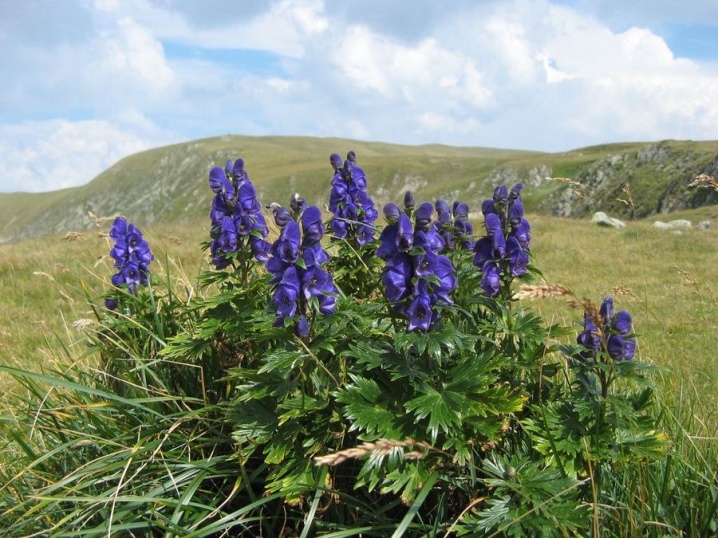
Hogweed
In order to make a solution from this plant, you will need:
- 1 kilogram of dried hogweed roots, which are harvested during or after flowering;
- 10 liters of water.
The roots of the plant must be dried, if you have not already done so, and filled with the required amount of water. After that, you need to let the solution brew, which will take no more than a day. After that, the solution will be ready for use, it must be applied once every 7-10 days.
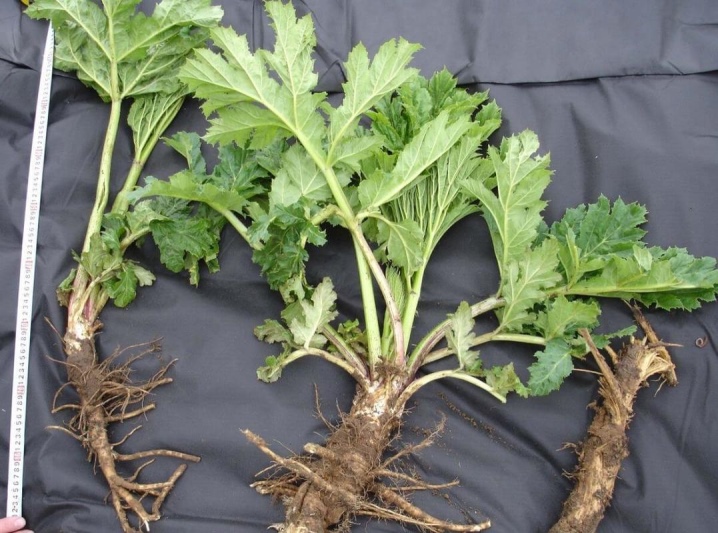
Dandelion roots
To prepare this solution, you need:
- 30 grams of crushed dry roots of this plant;
- 1 liter of water.
All this must be mixed and insisted for 2-4 hours. After that, the solution can be used, but not more than 2 times a week.
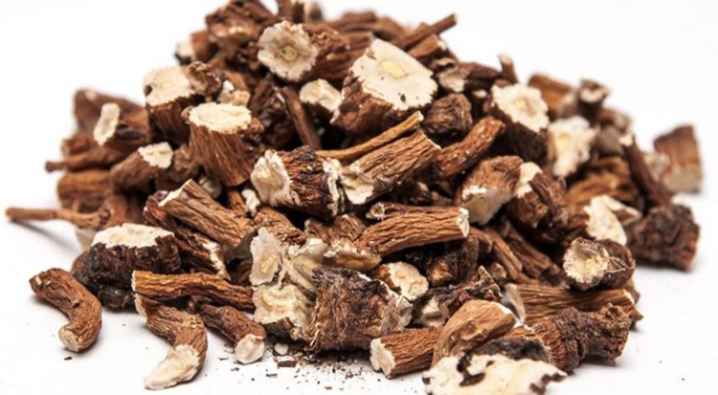
Garlic
The tool is quite time consuming, but the effect is noticeable in the shortest possible time. To make this solution, you will need components such as:
- 2 heads of garlic;
- 1 liter of warm water.
Chop the garlic and add the required amount of water.This liquid should be infused for about 5 days, after which it must be thoroughly filtered and water should be added again in a ratio of 1 to 2.
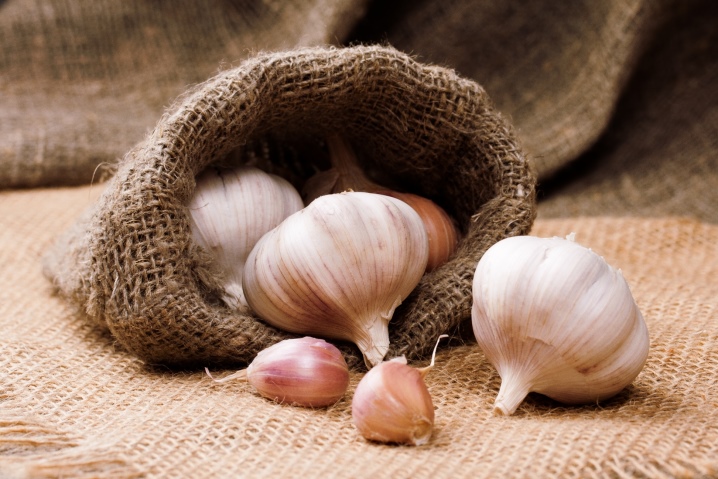
Datura ordinary
To make this remedy, you will need:
- 0.1 kilograms of dry dope;
- 1 liter of water.
After mixing all this, let the solution brew. After 12 hours, you can strain the liquid and use it to process cucumber leaves.
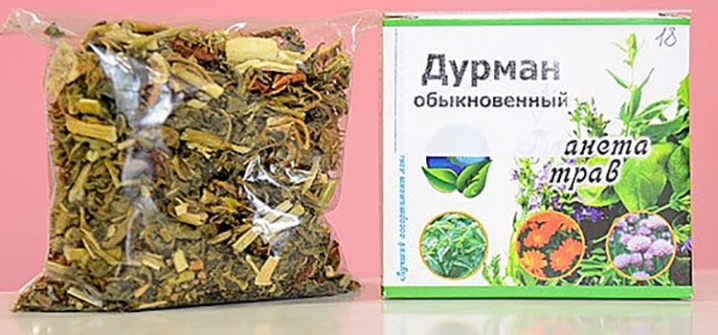
Onion peel
Another rather time consuming method. For this you need a handful of onion peels and 1 liter of water. After insisting it for 5 days, strain it, add water again in a ratio of 1 to 2. After that, it can be actively used to spray the leaves of the plant.
The onion smell will definitely scare away harmful insects, which will help save your plantings.
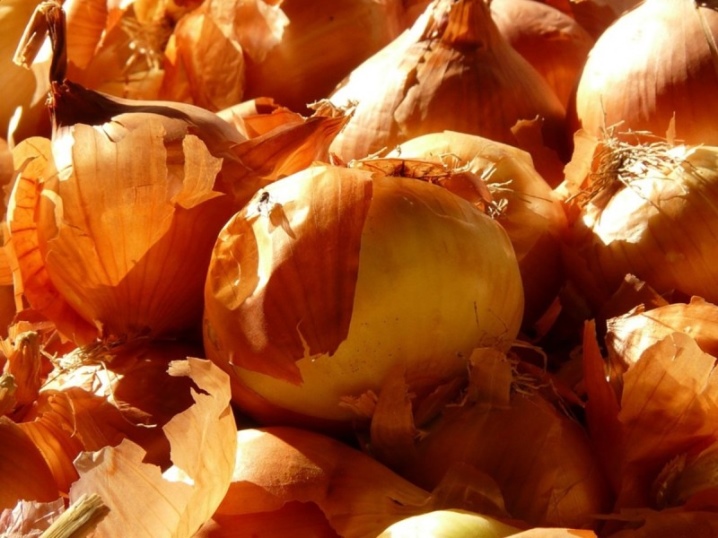
Creeping gorchak
To prepare this solution you will need:
- 0.1 kilograms of dried mustard;
- 1 liter of water.
Mix all this and let it sit for 10 hours. After that, by analogy with the above methods, strain and add water in a ratio of 1 to 2. It is recommended to use the solution no more than once a week.
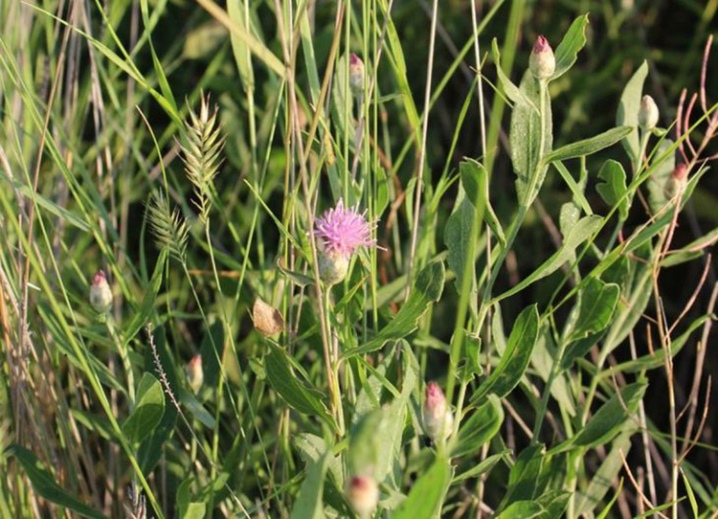
What agrotechnical techniques can be applied?
In order for the plants to please you with a large amount of harvest, it is necessary to provide good protection and care for the greenhouse in which they grow. This will help prevent spider mites from appearing.
The most basic rules for caring for greenhouse plants include careful but moderate watering of cucumbers, adding the necessary dressings with a high content of potassium and phosphorus, while not overdoing their dosage, frequent airing of the greenhouse, as well as weeding near the plants and loosening the earth.
Besides, it is necessary to carefully monitor the level of nitrogen in the soil that is located under the plant. With its excess in the soil, the fattening of plants begins, that is, they begin to actively gain green mass, which subsequently has a bad effect on its fruits.
It is these plants that the spider mite gives more preference to, which aggravates the situation even more.
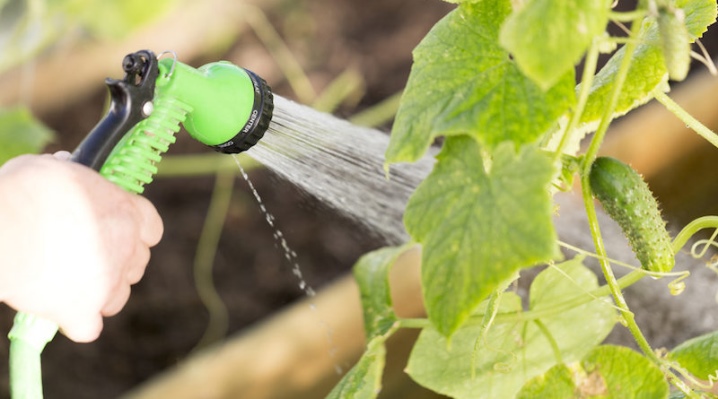
In addition, it is recommended to carefully monitor the greenhouse humidity level and air temperature. It is also necessary to carefully monitor when planting so that there is a certain distance between the plants. After harvesting during the fall, it is necessary to disinfect the greenhouse, treat the fertile layer of the earth with special means and preparations. It is also recommended to remove the top layer of soil, which takes about 20 centimeters, and change it to a new one every time.
Besides, you should also take a responsible approach to the choice of the variety of cucumbers. Among them there are those that are most resistant to the active attacks of various harmful insects. These include the varieties Murashka, Benefis, Rodnichok and 5 stars. They have high vitality and are able to resist voracious pests for a longer period of time.

Prophylaxis
Since the spider mite is a rather nasty pest that causes a lot of damage to plants, it is highly not recommended to neglect its prevention measures, which help to increase the safety of your plantings.
Initially, you need to monitor the condition of the greenhouse, controlling the temperature in it and the humidity of the air. This type of pest cannot tolerate low temperatures and high humidity. Accordingly, it is precisely with such conditions that it must be provided. If the humidity level in the greenhouse exceeds 60%, then the insect will die out.
In the autumn, when the harvest is fully harvested, as well as during the spring, when the snow has just melted, it is necessary to start digging the fertile green layers in the greenhouse. This will help eliminate the development of larvae, which are likely to remain in the soil to survive the winter. Digging is not a very time-consuming preventive process, but it helps to eliminate the possibility of the development of this pest.

Pay attention to the phosphorus content of the fertilizers for your plantings. The spider mite is the absolute enemy of this remedy, and therefore it can and should be actively used.
In addition, the foliage left over from the cucumbers does not need to be saved for subsequent insertion into silage. Burn it so that the tick that might remain on it will be completely exterminated.
Diligently and thoroughly eliminate weeds and other unnecessary plants, and plant next to your plantings that vegetation that will scare away harmful insects, preventing their appearance. Dilute cucumber plantings in the greenhouse with tomatoes. It also helps in getting rid of and repelling spider mites.
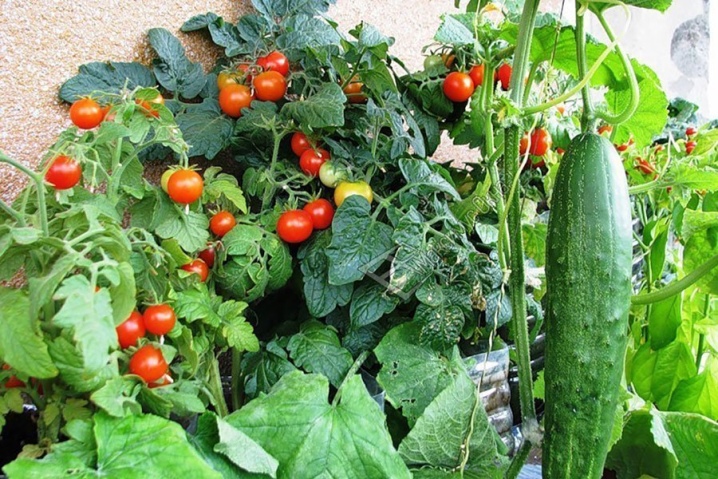
It is also not recommended to overdo it with chemicals. It is recommended to use them only if other methods of pest control do not help. In other cases, use biological and folk remedies to save your plants from ticks and get a good and, most importantly, safe harvest for the body, suitable for human consumption.
For information on how to get rid of spider mites on cucumbers in a greenhouse, see the next video.













The comment was sent successfully.